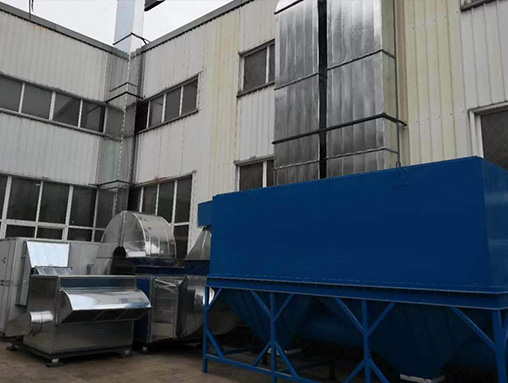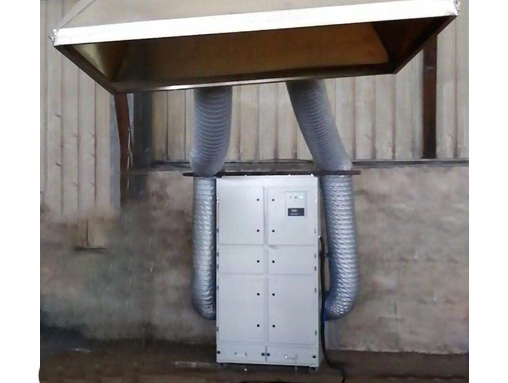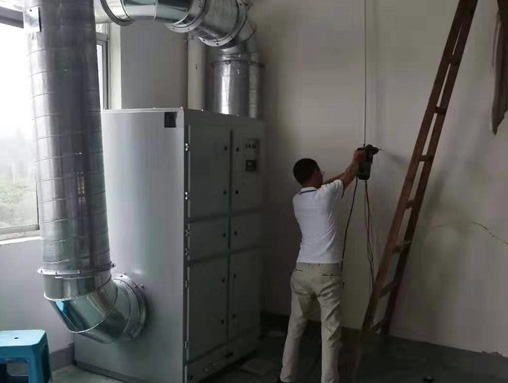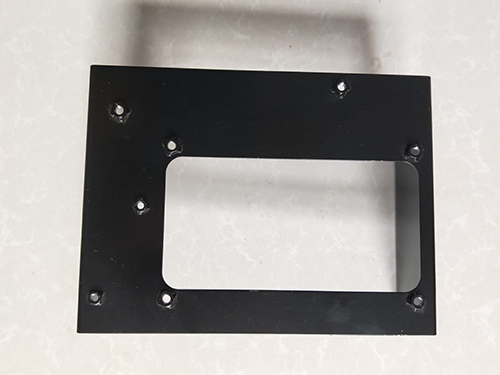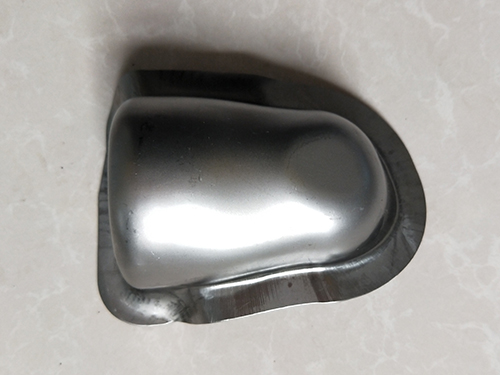Reasons and influencing factors for stamping parts jumping out
Multi station progressive dies can be used on high-speed presses to produce complex shaped sheet metal parts. The multi station progressive die structure is complex, and sometimes a single mold consists of hundreds of parts. To meet the requirements of high-speed operations, this mold is made of mold materials and processed mechanically. The design and manufacturing cycle of high-speed multi station progressive dies is long and the cost is high. To ensure the smooth progress of stamping processing and prevent damage to the mold, high-speed multi station progressive dies are usually equipped with various detection and protection devices.
During high-speed stamping, there is often a problem of workpieces and waste materials jumping out, that is, workpieces or waste materials that are punched down from the strip are lifted up by the punch and bounce back onto the concave die surface. The phenomenon of workpieces or waste materials jumping out can affect the smooth feeding of materials and is one of the main reasons for mold damage and production interruption. Therefore, taking measures to prevent workpieces and waste from jumping out is important for high-speed continuous stamping production.
1、 Reasons for jumping out and their influencing factors
The vacuum, oil film, magnetic attraction, or burrs between the punch and the punched sheet metal may cause the punched workpiece or waste to adhere to the end face of the punch and be carried out of the die hole. There are many reasons for workpieces and waste to jump out of the concave mold, including mold design and manufacturing reasons, as well as production operation reasons. Regardless of the reason, the fundamental problem is that the concave mold hole wall does not have enough force to keep the workpiece or waste material that has been punched down inside the mold hole.
The factors that affect the ejection of workpieces or waste materials from the concave mold mainly include punching clearance, sheet thickness, lubrication, and cutting edge condition. Generally speaking, a small gap between the punch and the die is beneficial for keeping the punched workpiece or waste in the die hole. On the contrary, the larger the gap between the convex and concave molds, the greater the tendency for the workpiece or waste to loosen from the mold hole. When the material is hard and the gap is large, the size of the workpiece or waste material punched out is smaller than that of the concave mold, and it is easy to be carried out of the concave mold hole by the convex mold.
When the material is thin, due to the small impact force, the lateral pressure on the concave die wall is also small, and the workpiece or waste material that is punched down is prone to loosen from the concave die hole. When the thickness of the sheet metal is less than 0.8mm, it is difficult to keep the workpiece and waste material in the die with reasonable clearance during high-speed stamping.
Reasonable lubrication is important during thin plate punching. Excessive lubrication is not conducive to keeping workpieces or waste materials in the concave mold hole. Excessive oil film can cause the workpiece or waste to adhere to the end face of the convex mold and be carried out of the concave mold.
The condition of the cutting blade during punching is another important factor that affects the ejection of workpieces or waste materials. Uneven sharpness, inconsistent size, or scratches of the cutting edge can increase the likelihood of the punch carrying the workpiece or waste out.
Due to various reasons causing workpieces or waste to jump out of the concave mold, corresponding measures should be taken according to the specific situation to avoid the jumping out of workpieces or waste.
2、 Measures to prevent jumping out
There are various methods that can be used in stamping operations to solve the problem of workpieces or waste materials jumping out of the die, and all have achieved varying degrees of success. These methods can generally be divided into two categories: one is to increase the holding force of the concave hole on the workpiece or waste by changing the shape of the convex or concave hole, and the other is to use external force to force the workpiece or waste to stay in the concave hole.
Change the shape of the punch from a flat bottom to a line, arch, or small cone. When the punch moves upward from the die, the workpiece or waste material that is punched down will be tightly stuck in the die hole due to the rebound effect.
Because the vacuum formed between the end face of the punch and the sheet metal being punched is an important reason for the workpiece or waste to jump out of the concave mold, changing the shape of the end face of the punch to reduce the contact area between the punch and the sheet metal can also help prevent the jumping out of the workpiece or waste. For harder materials, this method can achieve good results. If the material is soft, it should not be used, otherwise it may increase the risk of workpieces or waste adhering to the convex mold.
Bending processing is a processing method that applies a bending moment to a material to deform it, so the material is subjected to bending stress internally under the action of the bending moment. Automotive stamping parts; The stress distribution is bounded by the central surface of the sheet metal, with tensile stress on the outside and compressive stress on the inside. Once the bending moment is removed, the material returns to a state of force distance balance through elastic deformation. Compared to the standard shape of the workpiece, there will be a phenomenon of outward expansion or inward inclination of the quantity. Transform this phenomenon into elastic recovery. To distinguish, sometimes the state of outward opening is called rebound, and the state of inward tilting is called rebound. From the perspective of bending methods, there are also V-shaped bending and U-shaped bending, but the two are only different in rebound amount, and their essence is the same.
The factors that affect the rebound amount include part material, plate thickness, punching force, mold size and shape.
(1) The curvature radius of a convex mold. The rebound amount increases with the increase of curvature radius and decreases with the decrease of curvature radius. Although there may be slight differences due to different materials, it is generally advisable to choose a thickness below. At the same time, the small curvature radius of the bent sheet metal should also be considered.
(2) The fillet radius of the concave mold shoulder is too small. When the fillet radius of the concave mold shoulder is too large, the part opens outward, and when it is too small, the part tilts inward. Generally, 2-4 times the thickness of the board is selected.
(3) Bending. The bending is small, the inner and outer opening is large, and the outward opening decreases as it increases. Usually, bending should be at least 4 times the thickness of the board.
(4) The gap between convex and concave touches. When the gap between the convex and concave molds is larger than the thickness of the plate, the sheet metal cannot fit well on the convex mold. The larger the fillet radius of the convex mold, the greater the rebound amount. On the contrary, when the gap is too small, the rebound is almost negligible, but it becomes inclined inward. It is advisable for the gap to be 0.02-0.05mm smaller than the plate thickness.
Due to the existence of the above-mentioned factors, if we comprehensively examine these factors and the essence of rebound, it is easy to discover the reasons for the rebound and then take measures to stop it. The fundamental reason for rebound is that after the material is bent, the bent part is subjected to uneven stress. If the uneven stress in this part is transformed into uniform stress, even if the entire cross-section is under compressive stress or tensile stress, the rebound amount can be reduced. However, some parts have requirements for deformation, such as not being suitable for indentation, which requires appropriate design and process solutions. For these types of parts, it is advisable to use the shape of a convex concave die, which can also effectively reduce the amount of rebound.
Stamping processing technology can be roughly divided into two categories: separation process and forming process (further divided into bending, deep drawing, and forming).
The separation process is to separate the stamped part from the blank along the contour line during the stamping process, and at the same time, the quality of the separated section of the stamped part must also meet the requirements;
The forming process is to cause plastic deformation of the stamping blank without damage, and transform it into the required finished shape, while also meeting the requirements of dimensional tolerances and other aspects.
According to the temperature during stamping, there are two methods: cold stamping and hot stamping. This depends on the strength, plasticity, thickness, degree of deformation, and equipment capacity of the material, while also considering the original heat treatment state and end use conditions of the material.
